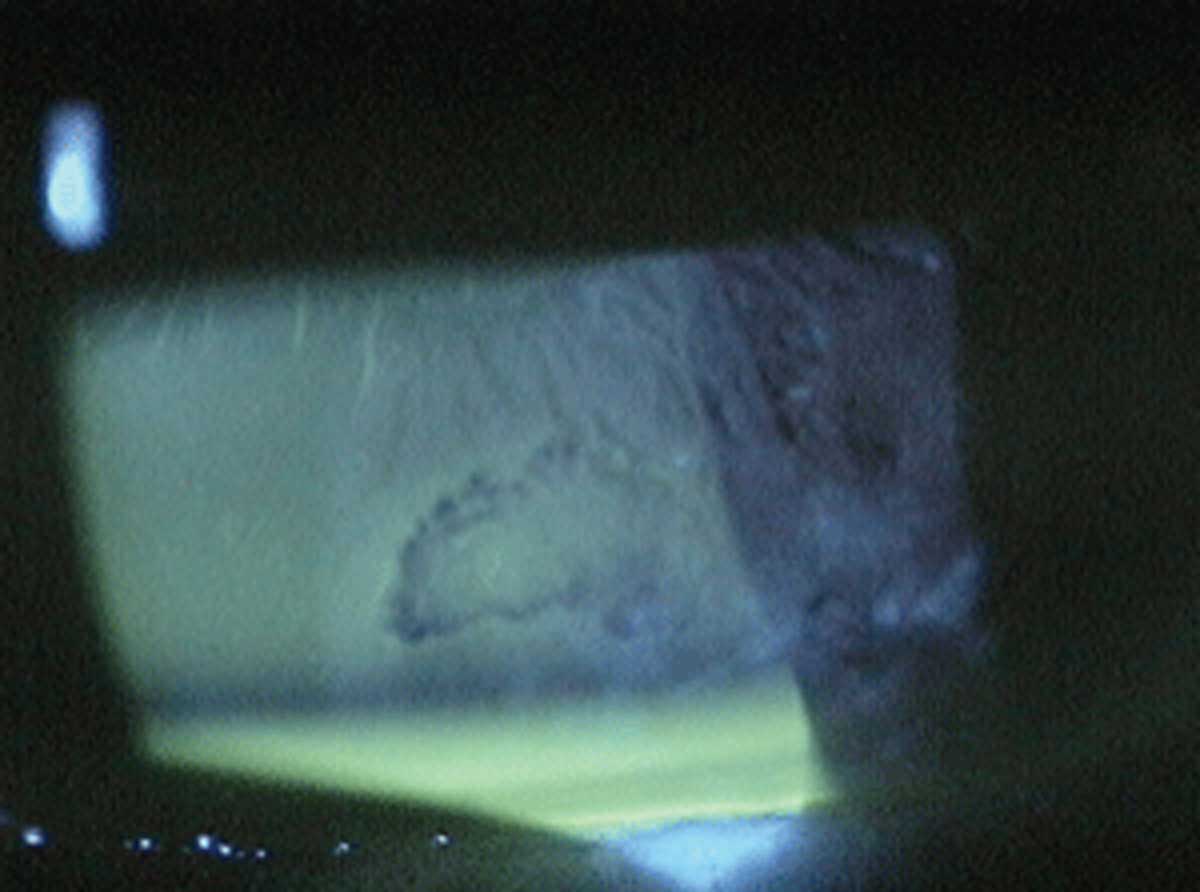 |
| The corneal sweep test may help identify patients with recurrent corneal erosions. Photo: Aaron Bronner, OD. Click image to enlarge. |
With limited methods currently available for the diagnosis of recurrent corneal erosions, researchers recently initiated a study to evaluate the incidence and epidemiology of this condition using standard diagnostic methods as well as a new approach called the corneal sweep test.
A retrospective chart review was conducted on 51 patients (58 eyes) with recurrent corneal erosion. They performed the corneal sweep test as a confirmatory test on patients who lacked visible corneal pathology.
The corneal sweep test was used to help confirm the presence of a corneal erosion in 84% of the total eyes. Among these eyes, 69% showed no evidence of corneal abnormality on slit lamp biomicroscopy and were classified as having an occult corneal erosion. This occurs, according to the study authors, when the cornea appears normal on slit lamp examination but the corneal sweep test shows an area of loose corneal epithelium.
Data also showed that the most common presumed mechanism of injury was clear corneal cataract surgery, with 71.4% of individuals developing symptoms only after undergoing the procedure. The study authors reported that all of these eyes had an erosion located directly over a clear corneal cataract incision.
These findings suggest the corneal sweep test is a new and effective technique for the diagnosis of corneal erosions when there are no visible corneal findings, according to the study authors, who recommend the use of this tool in clinical practice. “Within this study, the corneal sweep test was used to effectively diagnose recurrent corneal erosion as far as 468 weeks after the time of cataract surgery; as a result, clinicians should consider occult corneal erosions even when there is a remote history of eye surgery,” the researchers reported.
“With millions of clear corneal cataract surgeries and close to a million LASIK surgeries performed each year in the United States alone, many potential patients are at risk for developing symptoms from an occult corneal erosion,” they concluded in their paper, published in Cornea. “The corneal sweep test could lead to a paradigm shift in the way clinicians approach recurrent corneal erosions and patients with a persistent ocular pain syndrome.”
Kim ME, Kim DB. Implementation of the corneal sweep test in the diagnosis of recurrent corneal erosion: a 2-year retrospective study. Cornea. March 17, 2022. [Epub ahead of print]. |


